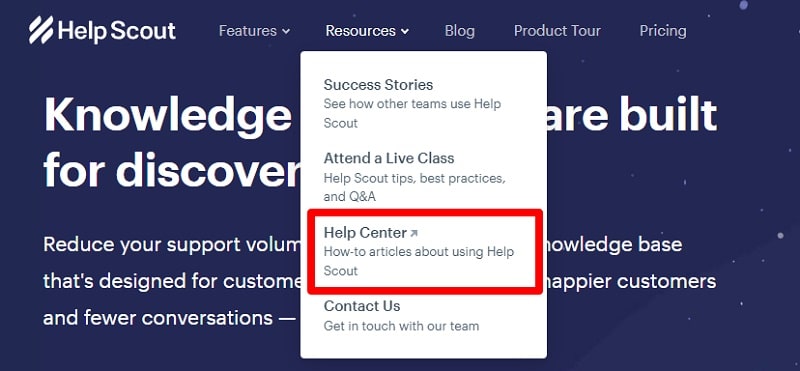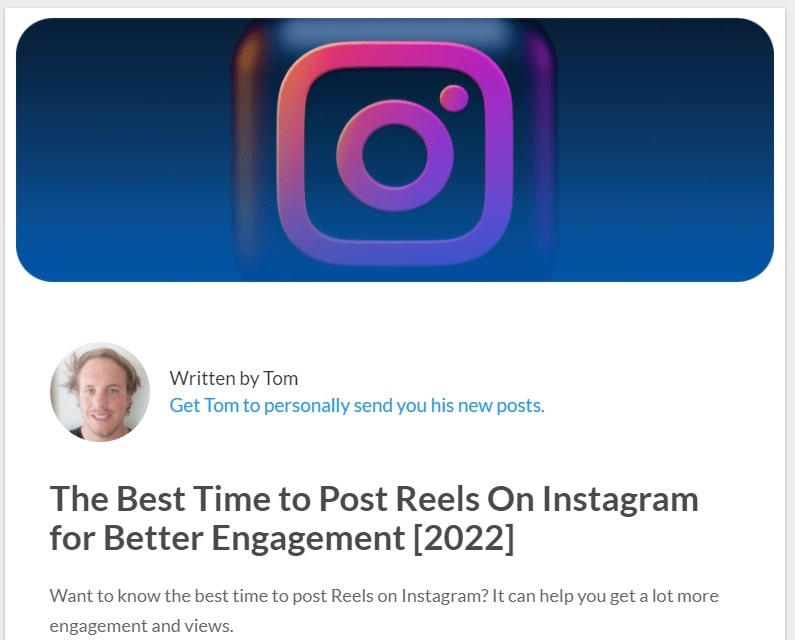Whether you’re new to marketing or you’ve been in the game for a while, hunting down new clients can feel exhausting.
The speaking engagements, constant ad targeting, cold calls … they’re enough to burn anyone out.
But what if we told you there’s an easier way to market? A way that doesn’t involve pitching, heavy ad targeting, or constant work output?
And even better, what if there was a way for customers to come find you, instead?
*As a matter of fact, there is. It’s called inbound marketing. *
Whether you’re an experienced marketer or still new to the game, inbound marketing techniques can grow your business like nothing else can.
Let’s take a closer look at what inbound marketing is and how it can help your business grow.
We’re also sharing six practical inbound marketing tips you can start implementing right away.
What’s Inbound Marketing?
Inbound marketing is a marketing methodology that focuses on building customer relationships and inviting customers to come to you.
The methodology focuses on building lasting relationships with customers using three types of strategies:
- Attracting strategies: Strategies that involve creating, publishing, and optimizing content in a personalized, relatable, and valuable way.
- Engaging strategies: Strategies that generate leads and nurture customer service. Examples include building a social media community, using email marketing, delivering epic customer service, and focusing on selling benefits over features.
- Delighting strategies: Strategies that focus on delivering an exceptional customer experience throughout the buyer’s journey. Examples include having a barrier-free checkout, helpful post-purchase support, and inviting the buyer to join a VIP program.
How Can Inbound Marketing Grow Your Business?
People don’t buy what you do. They buy experiences.
They’re not paying to use your project management software. They’re paying for the peace of mind they feel knowing your software keeps their projects organized.
They’re not buying your coffee beans. They’re paying for that feeling they get every time they smell that decadent, nutty aroma first thing in the morning.
Customers want more than fancy features and pretty packaging. They want a satisfying experience — and a relationship — all the way through. If you give them the experience they crave, they’ll come back again and again.
6 Inbound Marketing Ideas
Use the following inbound marketing ideas to grow your business:
Building a tight-knit social media community isn’t about having more followers than your competitors or posting reels every day. It’s about creating an inviting space that focuses on building relationships.
A space where you can show your brand’s humanity through behind-the-scenes sneak peeks, honest conversations, and valuable content. A space where you can get to know your audience in a profound way.
Consider business strategist, Jasmine Star, for example.
Jasmine’s Instagram grid is chock-full of brutal honesty, actionable business tips, and business resources. Her personalized approach to helping business owners coupled with her no-nonsense messaging has helped her build a strong community of entrepreneurs that love and trust her.
To follow suit, here are some easy ways to help foster a tight-knit social media community:
- Get involved in social media causes your audience is passionate about
- Ask your audience questions and meet them in the comments
- Talk to your audience like you would a friend by using authentic messaging
- Post social media content that’s inspiring, helpful, educational, funny, emotional, and/or relatable
2. Lock Arms With a Content Production Agency
Inbound marketing thrives off valuable, engaging, and optimized content.
But building a content strategy is a job in and of itself. From topic planning to keyword research to writing and optimization, there’s a lot to juggle.
If you’re not an expert, you could end up wasting a lot of effort and a ton of money.
That’s why we recommend hiring a content marketing agency to do the heavy lifting for you.
A content marketing agency has an entire team ready to research, plan, write, edit, optimize, and publish content for you. They also have all of the tools needed to produce that content for you, including writing apps, optimization tools, keyword planning tools, and project management tools.
Worried about what kind of return on investment (ROI) you’ll have when you hire an agency? Look for one that promises in-depth reporting services. This’ll give you an exact breakdown of what they’re doing, how much you’re spending, and how high your ROI is.
While many brands reach out to content production companies for help, some of the most common ones include tech, SaaS, wellness, and eCommerce brands — like monday.com and Shopify.

Big brands appreciate content production companies because they can produce high-volume, quality content in a fraction of the time.
3. Build a Knowledge Base
A knowledge base is a large collection of optimized articles regarding a few niche topics your brand specializes in. The articles focus on answering frequently asked questions (FAQs) and helping customers expand their knowledge about topics they’re curious about.
For instance, if you sell steak seasonings, your knowledge base might include answers to steak cooking FAQs, steak cooking techniques, and product demos.
A knowledge base is usually in the “resources” section of a website, or it can be part of a blog.
Sometimes brands also call it:
- Information Center
- FAQ section
- Help Center
- Training
- Tools and Tips
- Guides
For instance, helpdesk software provider, Help Scout, uses their knowledge base to help B2B customers learn how to:
- Set up and manage their Help Scout accounts
- Design productivity workflows
- Send targeted customer messages
- Manage live chats
- Format content

When building a knowledge base, focus on topics:
- That relate to your brand
- You have expertise in
- Your target audience has questions about
- Your target audience is curious about
Meet with your content production company to decide the best way to design, plan, optimize, and publish your knowledge base.
4. Commit to Writing Personalized, Relatable, Valuable, and Optimized Blog Posts
Creating high-quality articles for readers is key to increasing inbound traffic. Remember, customers don’t buy what you do or what you sell; they buy experiences, feelings, and connections.
When your blog posts are designed to attract, engage, and delight your audience, you create unforgettable experiences. Couple that with personalized, relatable, valuable, and optimized content and you’ve just created an attraction magnet.
At Wishpond, we value producing content that inspires our B2B clients to become better customer service providers. Understanding who our customers are and the pain points they struggle with, helps us create personalized, relatable content they can’t get enough of.

5. Fall in Love With SEO
Think of search engine optimization (SEO) as the glue that holds your inbound marketing efforts together.
After all, how effective will your efforts be if nobody sees them?
Having an SEO strategy means every social media post, article, and piece of content you produce will be optimized for search.
In other words, if you want people to find your content, you’re going to need an SEO strategy.
Thankfully, in today’s world, having a solid SEO strategy is at the top of most brands’ to-do lists.
Head to LinkedIn and search ‘SEO Specialist’ in the Jobs tab to see what we mean.

6. Create a Guest Posting Strategy
Guest posting is a genius way to attract more customers, boost your reputation, and enhance your SEO efforts.
If you haven’t heard of guest posting, it just means you or someone on your brand’s behalf writes guest posts for other blogs. Ideally, blogs that have a high domain authority — meaning, Google likes them.

Brands hire guest posters to:
- Share expertise about a topic they may not have knowledge about
- Increase their blog content
- Network with other bloggers.
- Cross-post content
The gist is: you give them valuable, optimized content. They give you a byline, access to their audience reach, and (hopefully) quality backlinks to your website.
Related Content
Conclusion
Growing your business can feel a lot like an uphill battle. The ad targeting, the pitches, the networking, the back-to-back meetings … the constant strategies that seem to be going nowhere.
But it doesn’t have to be that way.
With inbound marketing, you don’t chase customers — customers come to you.
With inbound marketing, you don’t trade long hours for leads — you set up evergreen methods that bring leads to you.
To grow your business through inbound marketing, we recommend:
- Building a tight-knit social media community
- Partnering with a content production agency
- Building a knowledge base
- Writing personalized, relatable, valuable, and optimized blog posts
- Getting serious about having a multi-channel SEO strategy
- Creating a guest posting strategy
Feeling eager to start using any of these tips? Leave a comment below to let us know how it goes!

Written by our guest writer Brad Smith, Founder of Codeless (a content production agency) and CEO at Wordable.io
His content has been highlighted by The New York Times, Business Insider, The Next Web, and thousands more.





